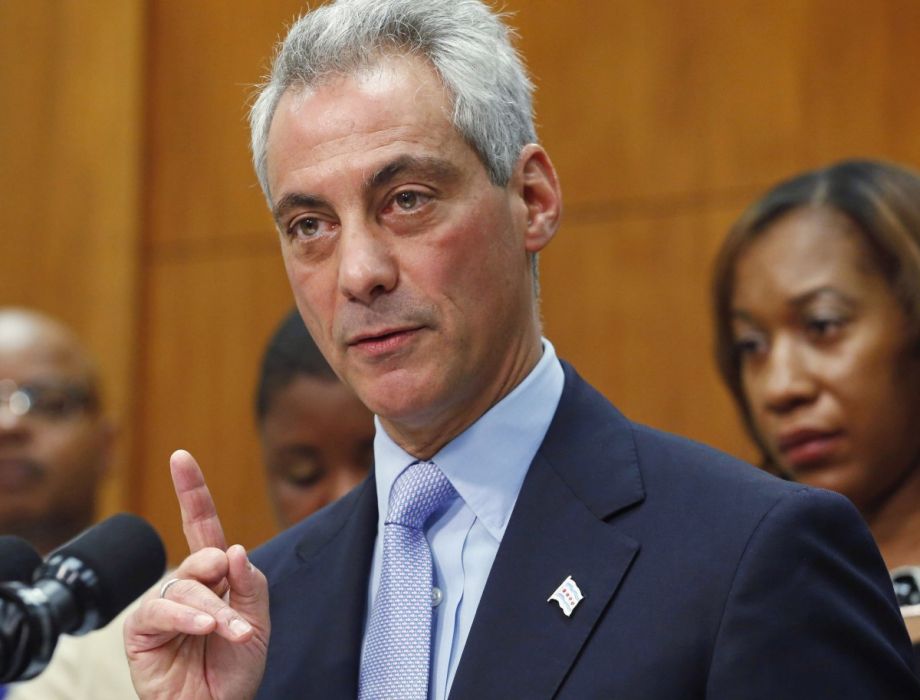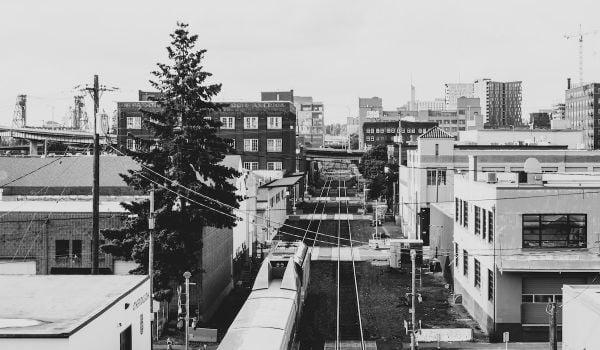While New York, San Francisco and other coastal cities make headlines for their housing crises, Chicago is often diagnosed — nationally and locally — with other problems: violent crime, failing schools, political corruption. But as Mayor Rahm Emanuel gets closer to the February election that will determine whether he gets a second term, affordable housing’s profile as a campaign issue is rising. This week, he expressed support for major proposed amendments to the city’s inclusionary zoning law, called the Affordable Requirements Ordinance.
Back in 2003, the ARO — which mandates that certain new developments set aside 10 percent of units as below-market-rate, or pay an in-lieu fee to the city’s affordable housing fund to subsidize affordable units elsewhere — represented a major victory for housing activists.
A decade later, though, many in Chicago’s affordable housing community say the ordinance needs to be stronger. “It’s not just a question of turning out units,” says Marisa Novara, program director at the nonprofit Metropolitan Planning Council, “but of where they are.”
According to Novara and others, the problem is that the in-lieu fee, set at $100,000 per unit, is simply too low. As a result, the vast majority of builders choose not to include the affordable units in their developments. In fact, the ARO has directly produced only 189 units during its lifetime — fewer than 20 a year, and a relative drop in the bucket in a city of 2.7 million people. More than 1,600 units have been created thanks to the in-lieu fee, but the vast majority of those have been in relatively poor neighborhoods in the city’s South and West sides.
The new recommended ARO amendments come from a task force Emanuel appointed back in July. If approved — something that seems extremely likely, given that the City Council has yet to defeat a single major mayoral initiative in the Emanuel era — the new ARO would require that at least 25 percent of affordable units be built on site, removing the ability to opt out totally. City neighborhoods would be classified into “downtown,” “high-income” and “low-moderate income,” and the in-lieu fee for the remaining 75 percent of units, if a developer chooses that option, would rise to $175,000 downtown and $125,000 in high-income areas; it would fall to $50,000 in the rest of the city. Developers would also be allowed to meet the affordable unit requirement by building or rehabbing on other lots within a mile of the main site. The aim is to create affordable units in the neighborhoods where they’re most scarce, rather than to continue to concentrate them in the city’s poorer communities.
That goal reflects what makes Chicago’s affordable housing crisis different than the ones in a handful of coastal cities that have dominated national coverage. In many Chicago neighborhoods, depopulation, disinvestment, segregation and crime have kept housing values relatively low, even just a few miles from the booming downtown. Meanwhile, communities on the North Side — as well as a handful to the south and west of the Loop — have seen rapid gentrification and skyrocketing rents. That dynamic has led to a dramatic increase in economic segregation. (The city does not have any rent control provisions, so tenants have very few protections from shifts in the market.)
“Chicago is not San Francisco or Manhattan, in that you can’t live in the city if you’re not rich,” says Novara. “You can still live here if you’re low-income, but you can only live in certain places.” That is, people of moderate means often have to choose between trying to make rent payments they can’t afford, and living in a neighborhood where they might not feel safe letting their children play outside.
As the city’s neighborhoods become more stratified, residents are increasingly pinched. “In 1990, one out of four Chicagoans were cost-burdened, paying more than 30 percent of their income for housing,” explains Kevin Jackson of the housing policy and advocacy group Chicago Rehab Network. “Today the number has doubled.”
The ARO proposal comes on the heels of another high-profile affordable housing ordinance. On November 12th, aldermen passed a measure to protect the city’s remaining single room occupancy apartment buildings, or SROs. The small, very low-rent units represent a “housing of last resort” for many people with low or irregular income, a thin line that separates them from homelessness. For historical reasons, they also happen to be mostly concentrated in North Side neighborhoods with good access to transit, groceries and other amenities.
Chicagoans have been publicly fretting about the demise of SROs since at least the 1970s, when the city’s nearly 30,000 units — a number that had already fallen precipitously since the 1960s — made up a major part of its housing safety net. Since then, high rents have spread across more of the North Side, and SRO conversions have continued apace. Today, there are only about 6,000 SRO units left.
The city’s new ordinance, passed in November, is aimed at preserving those remaining units. SRO owners who want to sell their buildings would have to spend at least 180 days looking for a buyer who will maintain low-rent status for at least 15 years. If unable to do so, they would then get a 120-day window to sell to any buyer, before the affordability requirement kicked in again. Alternatively, the owner could sell to any buyer immediately by paying $20,000 per unit into the city’s SRO preservation fund. Any displaced tenants who had been living in the building for at least a month would receive $2,000 to $8,600 in relocation assistance from the owner.
Building owners, predictably, have complained that these restrictions put them in a financial stranglehold. But as Emily Badger of the Washington Post pointed out last month, their complaints may have some force: Back in 1989, courts struck down New York City’s own SRO preservation law on the grounds that it constituted an illegal “taking” of private property, and just last year, the Supreme Court dramatically restricted the rights of municipalities to impose new conditions on property owners.
The ordinance’s proponents spent months tailoring the bill to avoid just those challenges, and so far no SRO owner has filed suit. Even if the law stands and successfully blocks future evictions, however, it won’t bring back the tens of thousands of units that have already been lost.
While housing activists have praised the SRO and ARO initiatives, the Emanuel administration has come in for criticism on other fronts. Earlier this year, the Chicago-based Center for Tax and Budget Accountability reported that for the last several years, the Chicago Housing Authority has been taking federal funding for 50,000 rental vouchers — and only providing, on average, 38,000. The CHA has the legal right to use voucher funding for other purposes under a federal agreement called “Moving to Work,” but the CTBA concluded that most of the money for 12,000 other vouchers was simply being used to pad the CHA’s cash reserves. The failure to provide so many vouchers seems especially troubling given that, this fall, the agency opened its housing waitlists for the first time since 2010, and received more than 282,000 applications.
Jackson sees hope in the increased attention to housing. “When you say crime and schools have crowded out the affordable housing agenda, we and our members recognize that those issues can’t be extracted,” he says. “We look at housing as foundational. If you care about educational attainment, you have to have a safe, decent and affordable place to live. We know that has to do with stability in communities.”
And the city still has a long way to go. Jackson says that in addition to the ARO and SRO ordinances, he’d like to see the state of Illinois use more of its capital investment budget on housing, and Mayor Emanuel experiment with “non-traditional funding sources” for housing, including issuing general obligation bonds.
“They’re trying to sharpen one tool,” he says, “and we’ve got to get quite a few more tools if we’re going to help.”
Daniel Kay Hertz is a student at the University of Chicago Harris School of Public Policy. He writes at danielkayhertz.com.
















